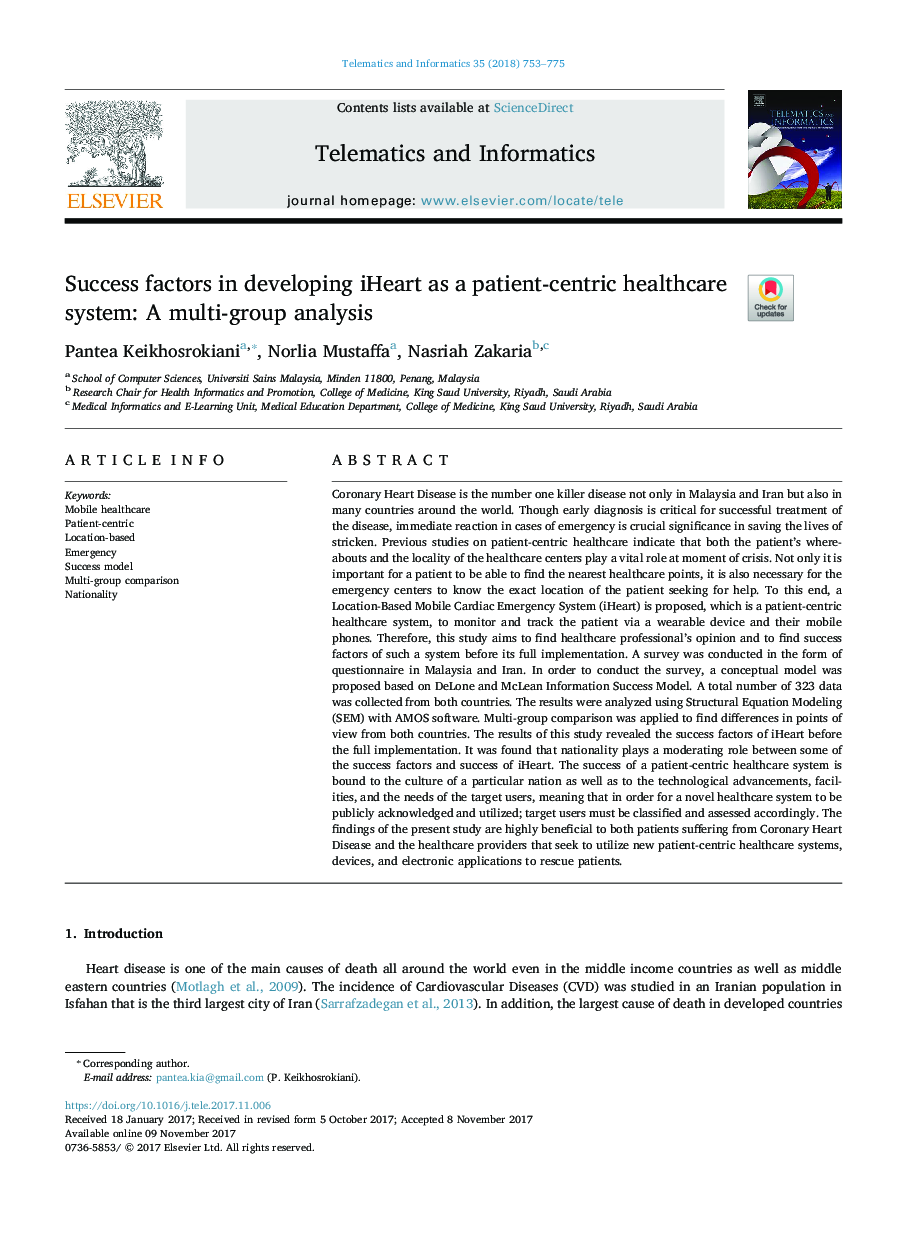| Article ID | Journal | Published Year | Pages | File Type |
|---|---|---|---|---|
| 6889553 | Telematics and Informatics | 2018 | 23 Pages |
Abstract
Coronary Heart Disease is the number one killer disease not only in Malaysia and Iran but also in many countries around the world. Though early diagnosis is critical for successful treatment of the disease, immediate reaction in cases of emergency is crucial significance in saving the lives of stricken. Previous studies on patient-centric healthcare indicate that both the patient's whereabouts and the locality of the healthcare centers play a vital role at moment of crisis. Not only it is important for a patient to be able to find the nearest healthcare points, it is also necessary for the emergency centers to know the exact location of the patient seeking for help. To this end, a Location-Based Mobile Cardiac Emergency System (iHeart) is proposed, which is a patient-centric healthcare system, to monitor and track the patient via a wearable device and their mobile phones. Therefore, this study aims to find healthcare professional's opinion and to find success factors of such a system before its full implementation. A survey was conducted in the form of questionnaire in Malaysia and Iran. In order to conduct the survey, a conceptual model was proposed based on DeLone and McLean Information Success Model. A total number of 323 data was collected from both countries. The results were analyzed using Structural Equation Modeling (SEM) with AMOS software. Multi-group comparison was applied to find differences in points of view from both countries. The results of this study revealed the success factors of iHeart before the full implementation. It was found that nationality plays a moderating role between some of the success factors and success of iHeart. The success of a patient-centric healthcare system is bound to the culture of a particular nation as well as to the technological advancements, facilities, and the needs of the target users, meaning that in order for a novel healthcare system to be publicly acknowledged and utilized; target users must be classified and assessed accordingly. The findings of the present study are highly beneficial to both patients suffering from Coronary Heart Disease and the healthcare providers that seek to utilize new patient-centric healthcare systems, devices, and electronic applications to rescue patients.
Related Topics
Physical Sciences and Engineering
Computer Science
Computer Networks and Communications
Authors
Pantea Keikhosrokiani, Norlia Mustaffa, Nasriah Zakaria,
